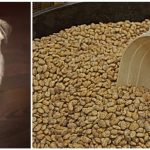If you heard about the legend regarding candy canes, you must know it was used back in the day as a bribe to make children be quiet in church. Nowadays, the candy cane is still around, not as a quick fix for kids but as a regular candy for people of all ages. Because it’s so traditional, even your doggie might have consumed some. Are candy canes safe for canines? Let’s find out!
Candy Canes: Safe For Dogs or Not?
Candy canes are not toxic for dogs but they are not ideal for them either. This is because of two reasons: one, due to the sweeteners and two, due to the colorants and flavorings. These candies are made by melting sucrose so it can be easily shaped into canes. The candy cane is brittle because of the added corn syrup.
Sucrose, more commonly known as table sugar, is not a desirable addition to a dog’s diet because a canine’s digestive tract is short and it is not designed to take in too many carbohydrates.
Sugar is a simple or fast-acting carbohydrate. Dogs can become hyper right after consuming sugar, but they would end up being lethargic afterward. Candy cane may give you and your dog an energy boost, but the empty calories in it can make you tired and sleepy after.
On the other hand, corn syrup is made from starch. Carbs like starches also metabolize into glucose and turn into fat. Once they are converted into fat, they can contribute to a number of diseases like diabetes, obesity, and hypoglycemia.
What Happens When a Dog Eats a Candy Cane?
Your pooch will likely be fine if he only ate a small amount of candy cane, but he may be sick if he accidentally consumed a lot of it. It’s worse if he accidentally ate the plastic wrapper as well. If this happens, bring him to a vet immediately. Do not attempt to do induce vomiting at home, especially when there is no consent from a veterinarian.
The symptoms of foreign object ingestion are vomiting, lack of appetite, having a hard time defecating (or no bowel movement at all), and sudden lethargy. Take note that the wrappers may cause your dog an intestinal blockage. The worst thing to happen is for the wrapper to stick to your dog’s stomach lining.
Due to the sugar content in the candy cane, your pooch may suffer from a mild gastrointestinal upset. Once the dog is already showing red flags like diarrhea and nausea, it is best to withhold food for around 7 hours.
Risks of Feeding Candy Canes to Dogs
A sugar-free candy cane seems like a healthier version of the regular candy cane. But be careful about those sugar-free candies because they will bring more harm than good.
Sugar-free candy canes usually contain xylitol, a naturally-occurring alcohol found in most plant materials. Xylitol is widely used as a sugar alternative because it has a lower glycemic index and it does not raise blood sugar levels.
While xylitol may be good for you, it is the other way around for canines. Xylitol can cause a critically low blood glucose level in animals.
Candy Cane Recipes for Canines
Dogs deserve some treats too but forget those store-bought candy canes. We got two recipes of canine-friendly candy canes. These biscuits and cookies are made to resemble candy canes so your dog can have his own sweet treat. Here they are:
Dog Candy Cane with Peppermint Oil (Optional)
This candy cane recipe can be done with or without peppermint oil. Peppermint is not toxic for dogs so you may use it, but only in small amounts. Large quantities of peppermint oil can cause a mild gastrointestinal upset in dogs. If you decide to do it, here’s how:
- In a mixing bowl, combine 3 cups of all-purpose flour to half a cup of nonfat powdered milk and ½ teaspoon of baking powder.
- In a separate bowl, dissolve 1 chicken bouillon cube by pouring a cup of warm water over it.
- Crack in 2 large eggs in the chicken water.
- Pour in the wet ingredients to the dry ones.
- Keep stirring until everything is combined nicely.
- Knead the dough for a couple of minutes. You may add a bit of flour to prevent the dough from being too sticky.
- Split the dough in two.
- Form a well using one part of the dough.
- Add in peppermint flavor or food coloring (optional)
- Put in the fridge for two hours.
- Once the dough is cool enough, place it on a baking sheet sprayed with nonstick cooking spray.
- Bake it in a preheated oven at 350°F for only 10 minutes.
Candy Cane Doggie Biscuits
If you’re not a fan of food colorings, this “hypoallergenic” dog biscuit is just the perfect treat for dogs! It’s quite similar to the first recipe above but it does not use food coloring, although it does use peppermint extract. The only difference from the recipe above is the added beet juice derived from a can of beets that gives the dough a natural pink color.
- Dissolve 1 vegetable bouillon cube in half a cup of warm water.
- In a large bowl, form a soft dough by mixing 2 cups of flour, 1 beaten egg, a teaspoon of baking soda, and ½ teaspoon of salt.
- Divide the dough in two.
- Pour the beet juice into half of the dough. Also pour additional flour, around half a cup to knead it to your dough.
- Cut the dough in small pieces and form ropes with it.
- Create a candy cane by twisting the two colors together.
- Bake in a preheated oven at 350°F for only 15 minutes.
Conclusion
The usual candy canes are not advisable for dogs. Just keep those sweet treats for yourself as your dog will not benefit from eating candy canes. If you want to treat your pooch to something sweet, give him carrots, bananas, or blueberries or make him some biscuits that are candy cane-look-alikes, similar to the recipes we shared above! Canines thrive on a low-carb and high-protein diet.























